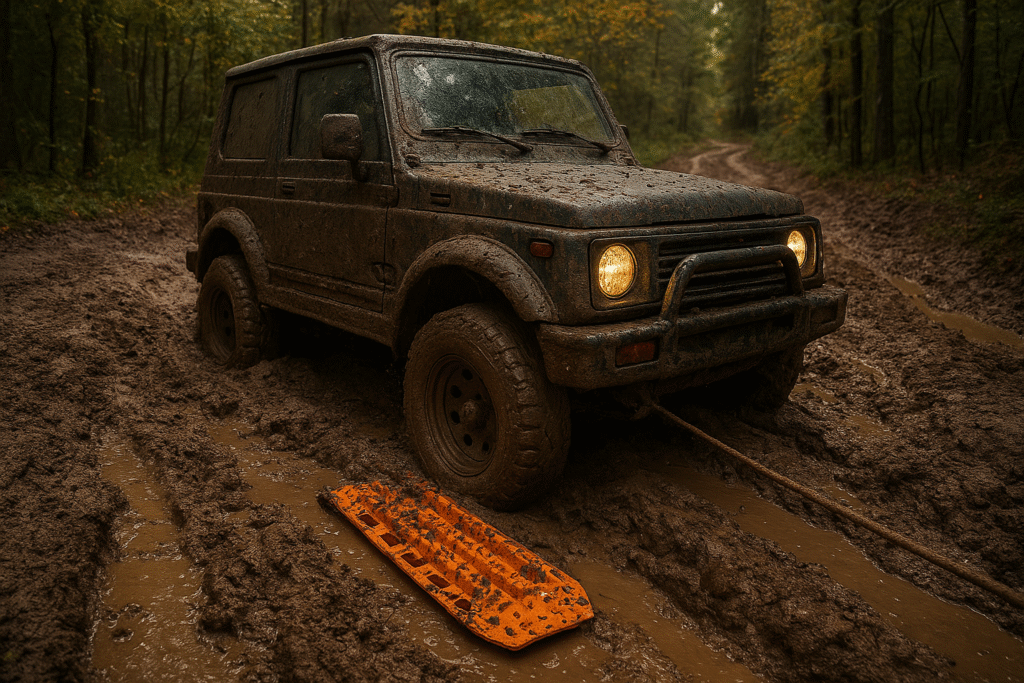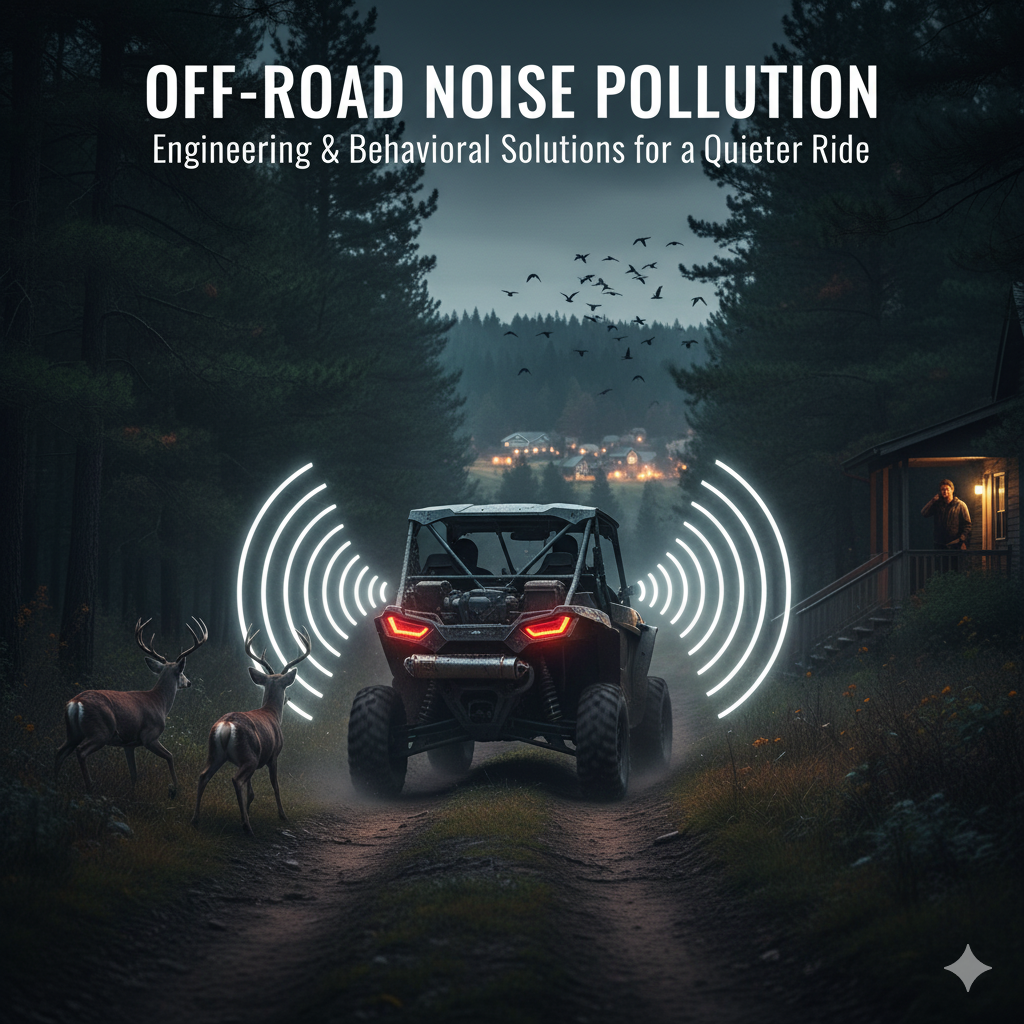There’s nothing like the thrill of taking your rig off the beaten path. But as any seasoned driver knows, off-roading doesn’t just test your vehicle—it tests your ability to adapt.
That’s why DIY offroad recovery: essential tools and techniques for solo adventurers is a skill every enthusiast should master. When you’re alone on the trail, you can’t rely on a buddy’s winch or someone else’s tow strap. You need to be equipped, confident, and ready to get yourself out of a jam.
In this post, I’ll share the gear I never leave home without, the techniques I’ve learned through trial (and plenty of muddy error), and practical tips for tackling recovery solo. By the end, you’ll have a clear plan for building your own recovery kit and handling sticky situations with confidence.
Let’s dive in.
Why DIY Offroad Recovery Skills Matter
When you venture off-road solo, you’re taking full responsibility for your safety. That means no backup vehicle to pull you out if you bury your tires, no quick trip to the gas station if you misjudge your range, and no instant rescue if your vehicle stalls in a water crossing.
DIY offroad recovery skills give you:
- Self-reliance: The confidence that you can handle situations without outside help.
- Safety: Quick recovery means less exposure to weather, wildlife, or remote risks.
- Adventure freedom: Knowing you can handle setbacks makes you more willing to explore further.
If you ask me, nothing beats the satisfaction of pulling yourself out of a bog or freeing your rig from sand with your own hands and gear.
Essential DIY Offroad Recovery Tools
Every adventurer’s kit should be customized, but there are some essentials I wouldn’t leave the driveway without.
1. Recovery Straps and Shackles
A solid recovery strap is the backbone of offroad recovery. Unlike chains, straps have stretch, which helps transfer energy smoothly.
- Look for 20,000+ lb rated straps.
- Pair them with D-ring shackles or soft shackles for secure connections.
2. Traction Boards
When tires spin helplessly in mud, snow, or sand, traction boards can be lifesavers.
I’ve used mine countless times in soft sand, and they’ve never failed me. Just wedge them under the tires and drive out slowly.
3. Shovel and Folding Tools
A compact shovel may not look like much, but it’s priceless when you’re buried to the axle.
- Dig around the tires
- Clear mud or snow buildup
- Create ramps for traction boards
4. Portable Air Compressor
Deflating tires for more traction is a proven off-road technique. But you need to re-inflate once you’re back on solid ground.
That’s where a 12V portable air compressor comes in.
5. Winch Alternative: Hand-Operated Recovery Tools
Not everyone has (or can afford) a winch. But tools like a come-along hand winch or a mechanical jack can provide pulling power in emergencies.
They take more muscle, but they can be the difference between spending a night stuck or making it home for dinner.
Techniques Every Solo Offroader Should Know
Mastering Tire Pressure
Lowering your tire pressure expands the tire’s footprint, giving you more grip.
- For sand: drop to 12–15 PSI
- For mud: around 18–20 PSI
- Always re-inflate afterward!
Rocking and Digging Out
If you’re only slightly stuck, sometimes gentle rocking—driving forward and backward—can build momentum. Combine this with strategic digging around the tires.
Using Traction Boards Effectively
Slide them under the tires as far as possible. Don’t gun the throttle—steady, low power works best.
Safe Recovery Practices
- Always inspect straps and shackles before use.
- Stand clear of tensioned lines.
- Work methodically—panic usually makes things worse.
Staying Safe During Solo Recoveries
Recovery can be physically demanding, especially when you’re alone. Here are a few safety tips:
- Plan your route: Share your trail plan with someone before heading out.
- Pack extra supplies: Water, snacks, and a first aid kit are musts.
- Check weather conditions: A trail that’s easy in the dry can become impossible in the rain.
- Know your limits: Sometimes turning back is smarter than pushing forward.
Recommended Amazon Gear for DIY Offroad Recovery
When I started, I wasted money on cheap gear that failed at the worst times. I’ve since learned that quality matters more than quantity. Here are a few items worth investing in:
 The Art of the Off-Road Shot: Capturing the Essence of Your ATV/UTV Escapades
The Art of the Off-Road Shot: Capturing the Essence of Your ATV/UTV Escapades
Conclusion
Mastering DIY offroad recovery: essential tools and techniques for solo adventurers is about preparation, practice, and patience. With the right gear and knowledge, you can handle most situations without calling for help.
Remember—every recovery you complete solo builds confidence for the next challenge.
I’d love to hear your recovery stories. Have you ever gotten yourself unstuck using one of these techniques? Drop a comment below and let’s trade tips.
Until then, stay safe, stay adventurous, and keep exploring beyond the beaten path.


















